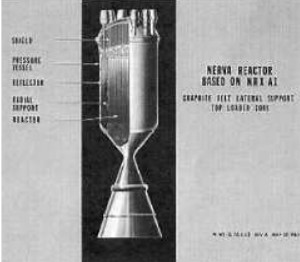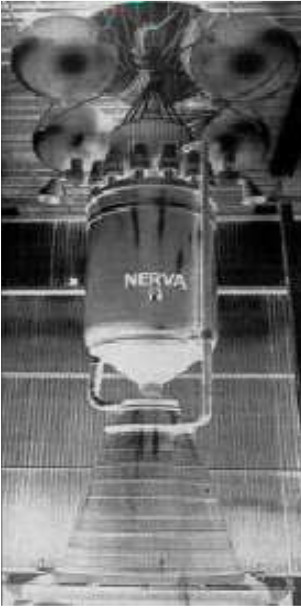Updated: 12-Oct-2020
This project that is developed by NASA, is a rocket engine that uses nuclear energy and LH2.

“Engine schematic drawing”
-The program was carried out in the 1960's, although the US Air Force and the Los Álamos Atomic Laboratory began studying it for using it in missiles in 1955.
-And just two years after the new NASA was created (1958), the program was going along another path too, that of long-mission space travel.

“NERVA II, complete” (PiP)
-This engine was intended to be used in stages of the Nova and Saturn space vehicles.
-And it was also planned for the Mars expedition project proposed by Von Braun in 1969, and for the Empire projects. Photos NASA.
-They used a mixed cycle, adding LOX in the Rita C. The thrust was variable according to the size of the engine and according to the project status.
-The NERVA-2 has a thrust of 867 kN.
From Appendix 6: One of the first NERVAs, the XE-Prime, was tested in the desert giving 55,000 pounds of thrust. It used liquid hydrogen heated by a nuclear reactor.

"The NERVA in the desert" (PiP)
-Although this would be its normal position, the tests were carried out with an inverted engine, that is, with the nozzle upwards.
Engines of NERVA
Model: Nuclear rocket engine
Power: Other details:


